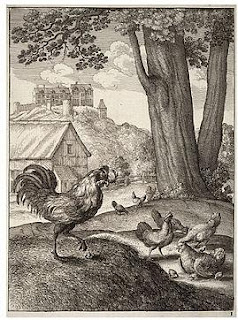 |
| The Origin of Fire |
In the land of present US, we can find a large tribal communities of native people. The Native Americans have their own unique history and culture. This story is one of the very common and famous Native American Folk tale story.
The Origin of Fire
- A Native American Folktale
Long, long ago, animals and trees talked with each other, but there was no fire at that time. Fox was the cleverest animal and he tried to think of a way to create fire for the world.
One day, the fox decided to visit the Geese, whose cry he wished to learn how to imitate. They promised to teach him if he would fly with them. So they thought out a plan to attach wings to Fox, but cautioned him never to open his eyes while flying.
Whenever the Geese arose in flight, Fox also flew along with them to practice their cry. On one such adventure, darkness descended suddenly as they flew over the village of the fireflies. In mid-flight, the glare from the flickering fireflies caused Fox to forget and he opened his eyes. When the fox opened his eyes, instantly his fake wings were collapsed! His fall was uncontrollable. He landed within the walled area of the firefly village, where a fire constantly burned in the center.
Two kind fireflies came to see fallen Fox, who gave each one a necklace of juniper berries.
Fox hoped to influence the two fireflies to tell him where he could find a way over the wall to the outside. They led him to a cedar tree, which they explained would bend down upon command and throw him over the wall if he so desired.













